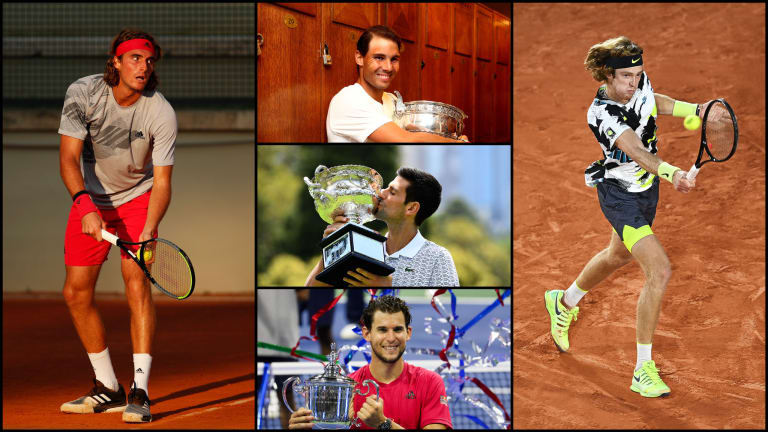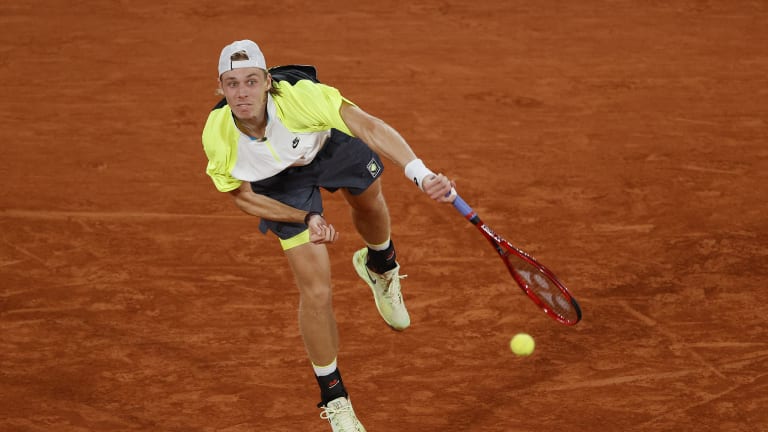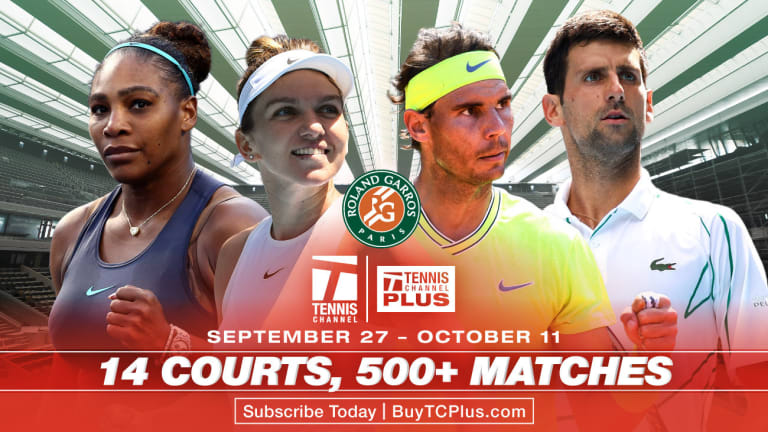Roland Garros
After Thiem, are Tsitsipas and Rublev next in line to challenge Big 3?
By Oct 02, 2020Roland Garros
Rafael Nadal to be honored with 'exceptional' tribute on opening day of Roland Garros
By Apr 17, 2025Roland Garros
French Open organizers introduce draw to access ticket sales
By Jan 07, 2025Roland Garros
Coaches Corner: Juan Carlos Ferrero proves essential to Carlos Alcaraz's Roland Garros success
By Jun 14, 2024Roland Garros
What’s next for Novak and Nadal? Four ATP storylines after the Paris fortnight
By Jun 10, 2024Roland Garros
Naomi’s resurgence, Iga on grass: Four WTA storylines after the Paris fortnight
By Jun 10, 2024Roland Garros
Carlos Alcaraz becomes the clay-court champion that he—and we—always knew was possible
By Jun 09, 2024Roland Garros
Coco Gauff wins first Grand Slam doubles title with Katerina Siniakova in dream team debut
By Jun 09, 2024Roland Garros
Coco Gauff is a Grand Slam champion in singles and doubles, exceeding her own expectations
By Jun 09, 2024Roland Garros
From Rafa to Iga: as one owner of Roland Garros departs, a new one has moved in
By Jun 08, 2024Roland Garros
After Thiem, are Tsitsipas and Rublev next in line to challenge Big 3?
Winning from two sets down is evidence enough of a fighting quality not everyone possesses and to do so after a day’s rest spent traveling suggests something special.
Published Oct 02, 2020
Advertising

After Thiem, are Tsitsipas and Rublev next in line to challenge Big 3?
Advertising
After Thiem, are Tsitsipas and Rublev next in line to challenge Big 3?
Advertising

After Thiem, are Tsitsipas and Rublev next in line to challenge Big 3?
© Getty Images
Advertising

After Thiem, are Tsitsipas and Rublev next in line to challenge Big 3?